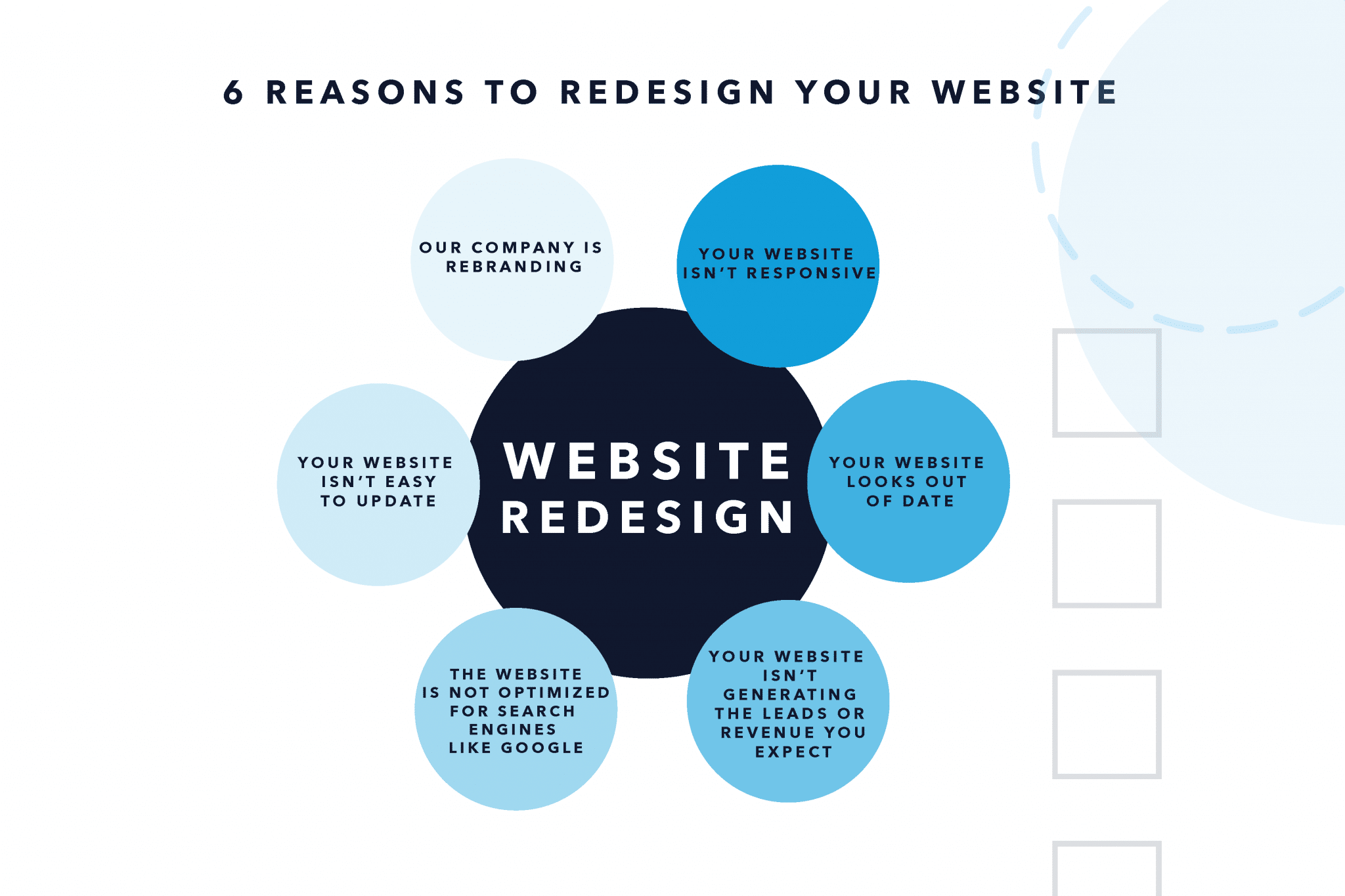SEO Gush
Insights and updates on the ever-evolving world of SEO.
When Good Websites Go Bad: Time for a Redesign
Is your website stuck in the past? Discover the signs it’s time for a redesign and how it can revive your online presence!
Top 5 Signs Your Website Needs a Redesign
In today's rapidly evolving digital landscape, it's crucial to keep your website fresh and inviting. Here are the top 5 signs your website needs a redesign:
- Outdated Design: If your website looks like it belongs in a different decade, it's time for an upgrade. Modern users expect sleek, contemporary aesthetics that reflect current design trends.
- Poor Mobile Experience: With mobile traffic surpassing desktop, a site that isn't mobile-friendly is a significant red flag. Responsive design is no longer optional; it's a necessity.
- Slow Load Times: If your website takes too long to load, users will likely bounce. A redesign can optimize performance and improve user experience.
- High Bounce Rates: A high bounce rate indicates that visitors aren't finding what they're looking for on your site. A redesign can help enhance content and functionality.
- Outdated Content: If your website is filled with outdated information or broken links, it’s time to refresh your content and improve your site's credibility.

The Cost of Ignoring Website Redesign: What You Need to Know
Ignoring the need for a website redesign can have significant, long-term costs that extend beyond just aesthetics. A dated website can lead to a decline in user experience, causing potential customers to bounce away in search of more modern alternatives. Additionally, a lack of mobile optimization can alienate a significant portion of your audience, as over half of web traffic now comes from mobile devices. SEO performance also suffers when a website is not updated, resulting in lower visibility in search engine results. In this competitive digital landscape, maintaining a fresh online presence is crucial for attracting and retaining users.
Businesses that underestimate the importance of regular website updates may find themselves facing increased operational costs. Outdated platforms can lead to more frequent bugs and security vulnerabilities, which require costly fixes and potentially harm your brand's reputation. Moreover, a poorly designed site can result in lost revenue, as customers are less likely to engage with a website that feels neglected. To remain relevant and keep up with industry standards, investing in a timely website redesign is not just beneficial, but essential for long-term success.
Is Your Website Turning Visitors Away? Key Red Flags to Watch For
In the competitive landscape of online presence, it is crucial to assess whether your website is turning visitors away. One of the most significant red flags to watch for is a high bounce rate. If visitors are leaving your site shortly after arriving, it signals that your content may not be engaging or relevant to their needs. Additionally, slow loading times can also contribute to this issue, as users are often impatient and likely to abandon a website that takes too long to load. To address these problems, regularly analyze your site's performance and make necessary adjustments to enhance user experience.
Another crucial factor to consider is website navigation. If visitors find it difficult to locate information or products on your site, they are more likely to exit in search of a more user-friendly experience. Implementing a clear and intuitive navigation structure can significantly reduce the chances of turning visitors away. Furthermore, aesthetics matter; a cluttered or outdated design can also deter potential customers. To maintain your site's appeal, invest in modern, responsive web design that instills confidence and encourages visitors to explore further.